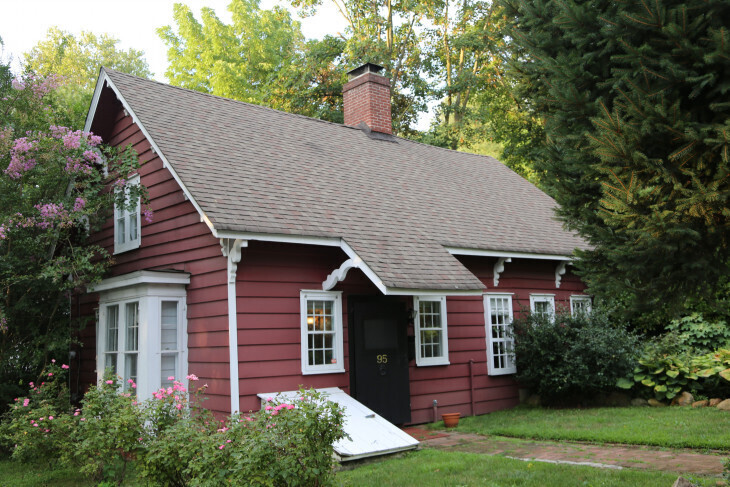John Rogers House
95 East Broadway, Roslyn

It is Francis Skillman's narrative that identifies this 18th century house as the house of John Rogers, a blacksmith. John Rogers and Richard Valentine, who had signed a patriot petition of allegiance in 1776, were among the men of Long Island who emigrated to Connecticut in 1776 to escape punishment at the hands of their Tory neighbors. This flight indicates that their rebel sympathies were pronounced, and that their lives so near the loyalist lines at New York would not have been easy during the seven-year occupation.
No record exists of John Rogers or his house before the Revolution, but since a house and a blacksmith shop were mentioned shortly after the peace, and Rogers was away during the war, it is thought that this house was built before he left in 1776.
In the Town Records for 1786, mention was made of a blacksmith shop John Rogers had built on land being sold by John Carman to John Golden (N. H. Town Records, Volume VI, page 340). And on May 31,1793 John and Elizabeth Rogers sold a house and blacksmith shop to Andrew, Henry and William Onderdonk. (N. H. Town Records, Volume VI, page 347). This deed, however, locates the house on the west side of the road, with the blacksmith shop on the east. As the house is presumably standing on its original foundations on the east side of East Broadway, the possibilities are that the course of East Broadway has been changed since 1793, or the language of the deed was transcribed or typeset incorrectly for the Town Records. The third possibility, that this house is not John Rogers' house, discredits Skillman's narrative, and gives us an 18th century house not mentioned by him or anyone else.
At this point there is a hiatus in the known deeds for the Rogers house until December 20,1830 when Robert Seaman purchased a five-acre parcel south of John R. Schenck's land from Stephen Weeks. (Queens County Liber AA of Deeds, page 468). Though no house was mentioned, this five-acre parcel seems to have included the Rogers house. It was Seaman who occupied the house when the Walling Map was surveyed just before 1859, and Seaman whom Skillman identified with the John Rogers house in his narrative.
In 1865 the Seamans sold off a parcel of land north of the house of Benjamin Hicks. (Queens County Liber 250 of Deeds, page 94).
After having been put up for public auction, the Rogers house passed next to Benjamin D. Hicks of Westbury and Henry W. Eastman of Roslyn, on November 21,1870. That deed, which is very specific, refers to "Wilkey's burying ground" (probably the old Roslyn Cemetery on the hillside above East Broadway), and it further refers to a Seaman family burying ground 32 feet wide on its north and south ends and 82'4" on east and west sides. It was at the northeasterly corner of the Seaman land, and thus may have been abutted directly on the Wilkey Burying Ground already established. The land conveyed was just under 4V2 acres (Queens County Liber 334 of Deeds, page 418).
In 1906 and 1914 the house belonged to Mrs. H. Browne.
The original John Rogers House was much smaller than it is today and, in its early state, had a strong resemblance to the earliest section of the Wilson Williams House, (Tour Guide 1975-76) although considerably smaller than the letter. Both probably date from the third quarter of the 18th century although it is impossible, in the light of present knowledge, to determine which house was built first. The Wilson Williams is larger and the more sophisticated of the two houses.
0 Comments